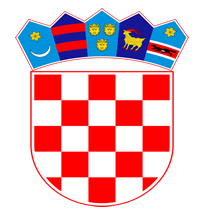Croatia: Government
Key Figures
- Chief of State:
- President Zoran Milanovic
- Head of Government:
- Prime Minister Andrej Plenkovic
Overview
- Government Name:
- Republic of Croatia
- Constitution:
- Adopted: 1990; Constitution contains provisions concerning the protection of intellectual property rights. Also outlined are the historical foundations, organization of government, community-level/local/regional government, international relations, and the European Union.
- Government Type:
- Parliamentary Republic

Index of Economic Freedom
Country Risk Rating
Government Branches
| Main Powers | Election Process | Election Cycle 1 | |
|---|---|---|---|
| Executive | The prime minister is the head of government and the commander in chief of the armed forces. |
The president is elected by absolute majority vote through a two-round system. |
5 years |
| Judicial | The judicial branch is independent of the executive and legislature. The supreme court is the highest court in appeal. |
The president of the supreme court is nominated by the president of Croatia and elected by Croatian Sabor (parliament) for a 4-year term. Other supreme court justices are appointed by national judicial council. |
Mandatory retirement age of 70 |
| Legislative | The parliament's (Sabor) powers include enactment and amendment of the constitution and laws, adoption of the government budget, declarations of war and peace, defining national boundaries, and calling referenda and elections. |
The assembly has 151 members elected through a closed-list proportional representation system. |
4 years |
Regional Trade Blocs
International Organization Participation [2]
Environmental Agreements [3]
Tax Information [2]
- Tax Authority:
- Ministry of Finance
- Tax Name:
- VAT
Sources:
- ElectionGuide http://www.electionguide.org/
- EY, http://www.ey.com
- CIA World Factbook, https://www.cia.gov/the-world-factbook/
- U.S. Bilateral Relations Fact Sheets http://www.state.gov/r/pa/ei/bgn/


